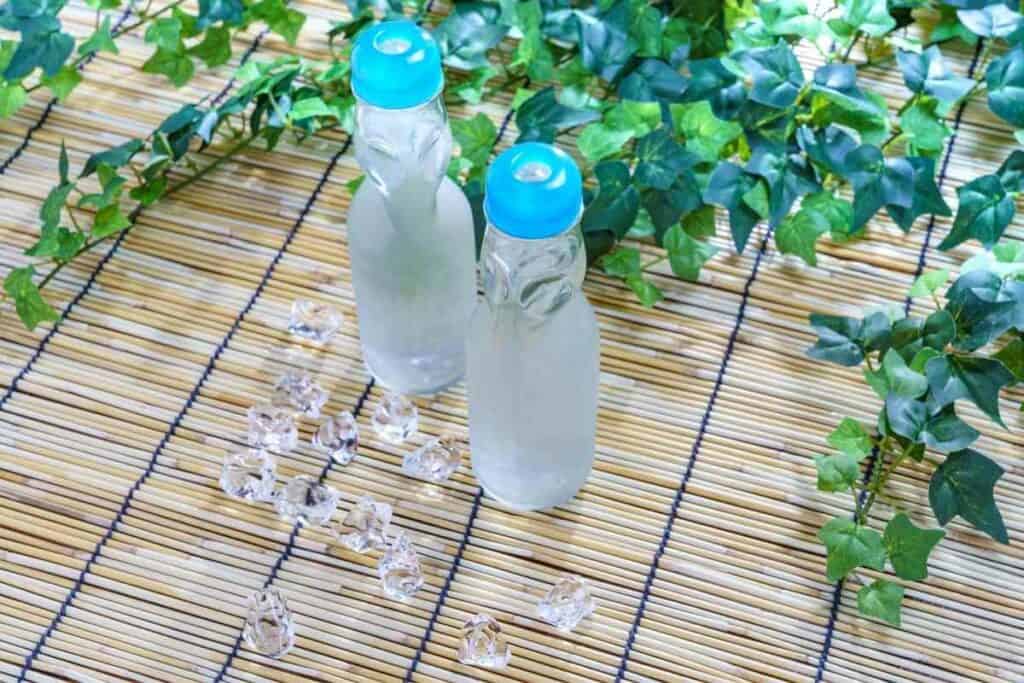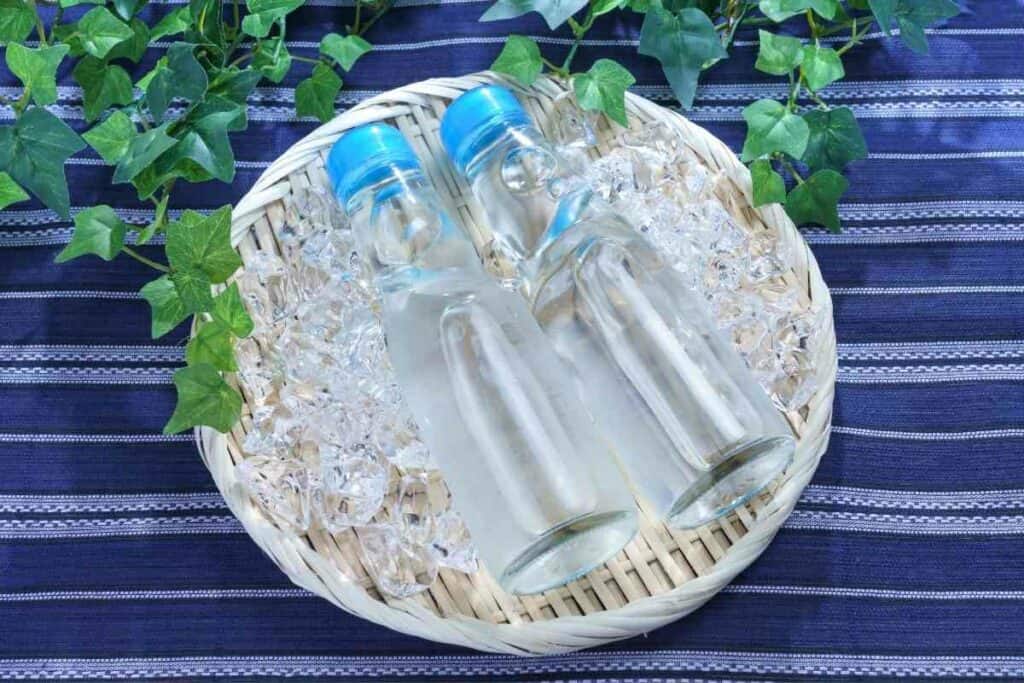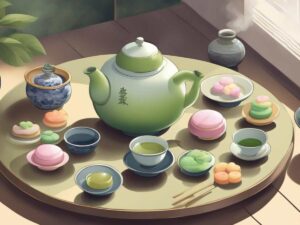Ramune (ラムネ) is a Japanese soft drink which dates back to the late 19th century. First introduced in Kobe, Hyogo’s capital city.
The word ‘ramune’ is a borrowing from the English word ‘lemonade’, a drink on which Ramune was based, and was instigated by Alexander Cameron Sim, a British Pharmacist.

Still popular to this day, the fizzy refreshment sells well and has remained popular, partly, due to its uniquely historic Codd-neck bottle and its assortment of over 50 different flavours.
Here, we will explore this drink’s intriguing glass housing and explain, step-by-step how to open them.
Table of Contents
What Is a Codd-neck Bottle?
Designed specifically for carbonated drinks, the Codd-neck (more commonly known as the ‘Codd bottle’ or ‘Marble bottle’) was invented by Hiram Codd in 1872.
With a closing design, a marble is placed within the bottle’s pinched neck chamber, in order to preserve the gas.

Filled upside down, the bottle then seals itself. The pinch in the neck not only catches the marble but also holds it during the pouring of it.
Constructed with thick glass, in order for it to withstand the pressures of the gas, this bottle is still used in India (for the soft drink Banta) and other parts of the world today, but declined in use during the 1930s.
Original bottles are very rare, due to the fact that children apparently routinely smashed the bottle to get the marble out, and they can sell for thousands at auction, particularly in the United Kingdom.
How Is a Codd Bottle Opened?
With original bottles, the whole of the top was glass and people used to quite simply push the marble into the neck of the bottle, using their finger.
The bottle would pop open with a little force and produce a satisfying sound as the gas escaped.
More modern designs use less glass and have an extra plastic piece around the tip of the bottle, for safety reasons.
Booking.comThese can also come with opening or ‘popping’ tool which is basically a small piece of plastic tailormade to fit the circumference of the marble and used to push it down without direct contact with it.
The opener itself, however, is not a new concept by any means.
What a Load of Codswallop!
Ever heard of the word ‘codswallop’?
According to some sources, the term is actually rooted in the invention of the Codd neck bottle and is linked to the act of opening it: the onomatopoeic ‘wallop’ that you have to give it.
Some bottles apparently take a great deal of effort to open, when they are left for a while after filling them.
If the gas builds to a certain level, a tool is required to open them.
A ‘Codd’s Wallop’ was a small, cylindrical piece – shaped quite like a bottle top – with a carved central popping piece to push the marble down, while providing a smooth surface to protect the palm of the hand when applying pressure.
The word is considered to be folk etymology and is an interesting addition to the English language.
What Replaced the Codd Bottle?
Although it is still used today, the Codd-neck bottle is much more of a novelty item.
The drinks can was invented in 1935, which coincided with the decline in use of other types of container like the Codd bottle.
There are now, roughly, 380 billion canned drinks produced, globally, each year.
Clearly a much cheaper and more efficient process, similar to metal and plastic screw caps for bottles (invented c.1870).

Now, they are used so widely that there is literally no need for the vintage, codd-necked drinks container that costs more to manufacture.
Get your own Codd-bottle machine!
Should you find yourself feeling nostalgic enough to want to experience the uniqueness of this nifty little invention, then look no further than a search on your computer or smartphone.
Machines can be quite reasonably priced and a case can be made for the use of refillable glass bottles.
No plastic, no metal, and overall better for the environment. You can also control the ingredients.
Some British pub owners have a machine for the novelty of it and customers can even mix and fill their own.
Worth it, arguably, even if to just experience a genuine piece of History.
Final Thoughts
Some argue that returning to these types of refillable container could have a massively positive impact on our planet.
Not only would it provide people with a unique taste of a vintage item but it would also undoubtedly give levels of plastic found in the Sea a good old codswallop.
The Codd-neck bottle is now making a small come back as a reusable item and some companies have updated the design.
It is incredibly popular, however, in India.
Things have changed significantly since the late 19th century, but this element of our manufacturing past is a truly unique one which has and will endure the test of time.
You Might Also Like
- Japanese Traditional Sweets (Wagashi): A Guide to Their Origins and Varieties
- A Taste of Japan in Every Bite – Japanese Candy & Snack Box Review
- Bubble Tea vs Boba Compared: What’s the Difference?
- Best Izakaya Foods for a Relaxed Night Out (My Top 10 Picks)
- Edo Kiriko Whiskey Glasses (Japanese Heritage in Every Pour)
- Japanese Viral Foods on Social Media (Discover the Top 10)









